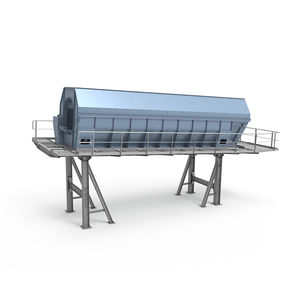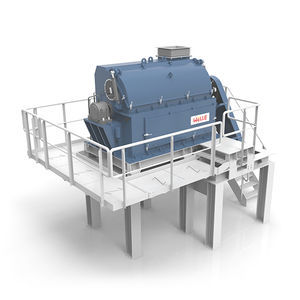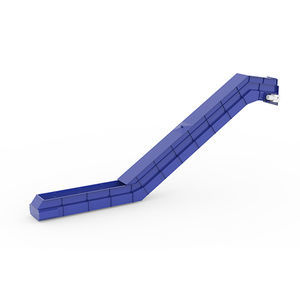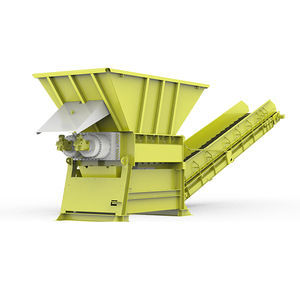
- Hydraulics - Pneumatics
- Filter and Separator
- Gravity separator
- Changzhou Jinyuan machinery equipment Co., Ltd.
- Products
- Catalogs
- News & Trends
- Exhibitions
Gravity separator wastepaperfor films and bags



Add to favorites
Compare this product
Characteristics
- Technology
- gravity
- Separated substance
- waste, paper, for films and bags
- Application domain
- for wastewater treatment, construction
- Flow
60 m³/h
(2,118.88 ft³/h)
Description
Ballistic separator is a kind of equipment that sorts materials according to their shapes and specific gravity. It is often used to sort household waste, dried kitchen waste, paper and film, etc. The ballistic separator get its name because the inclined paddles separately moves up and down, back and forth through the eccentric shaft, when materials are feed from top of the paddles , they are driven in a ballistic motion. The heavier 3D fractions (such as plastic containers, bottles, cans, wood, etc.) roll back, and lighter 2D fragments (such as film, paper, cardboard, textiles) move forward, and fine materials go through the paddle perforations (sand, organic food residues), these 3 fractions are then conveniently treated in subsequent processes.
The screening paddles are made of special steel plates for long lasting service.
Hydraulic adjustment of the paddles makes it easy for achieving good sorting result.
Maintenance doors for access to the inside of the separator for maintenance and cleaning.
Robust steel construction, possible to stack one on top of other for more 2D
fraction.
Modular design, the screen hole can be customized according to the size of materials
Large mass flow up to 60 m3/h.
Applicable fields:
Construction and decoration waste, domestic waste, stale waste, industrial waste, etc.
Other Changzhou Jinyuan machinery equipment Co., Ltd. products
Products
*Prices are pre-tax. They exclude delivery charges and customs duties and do not include additional charges for installation or activation options. Prices are indicative only and may vary by country, with changes to the cost of raw materials and exchange rates.








